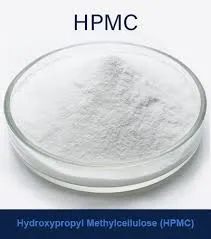
Sep . 29, 2024 21:38 Back to list
HPMC Types and Their Applications in Various Industries and Products
Understanding HPMC Grades and Their Uses
Hydroxypropyl methylcellulose (HPMC) is a versatile cellulose ether that has garnered significant attention across various industries due to its unique properties and functionalities. Given its wide range of applications, understanding the different grades of HPMC and their specific uses is essential for manufacturers, formulators, and consumers alike.
What is HPMC?
HPMC is a non-ionic water-soluble polymer derived from cellulose, modified to enhance its solubility and various characteristics. It is commercially produced through the chemical modification of cellulose, where hydroxypropyl and methyl groups are introduced. The result is a compound that exhibits excellent film-forming, thickening, binding, emulsifying, and protective colloid properties.
Grades of HPMC
HPMC is categorized into several grades, based primarily on its viscosity, degree of substitution (the extent to which the cellulose backbone is modified), and solubility. The most common grading system includes low viscosity, medium viscosity, and high viscosity grades. These grades are further distinguished by their functional attributes
1. Low Viscosity HPMC This grade typically has a viscosity of 5,000 cP or lower. It is commonly used in applications where a thinner consistency is required, such as in spray-drying, coatings, and as a lubricant in tableting processes. Its rapid hydration properties make it ideal for formulations that require quick dissolution.
2. Medium Viscosity HPMC With viscosities ranging from 5,000 to 15,000 cP, medium-grade HPMC finds extensive use in the pharmaceutical industry. It serves as a binder in tablet formulations and as a thickening agent in various liquid formulations. Its balanced properties make it suitable for a myriad of applications, from personal care products to food.
3. High Viscosity HPMC This grade features viscosities above 15,000 cP and is widely used in applications that require superior thickening and gelling capabilities. High viscosity HPMC is often incorporated into construction materials, such as mortars and adhesives, to enhance workability and water retention. It’s also found in the production of controlled-release pharmaceutical formulations, where it helps modulate the release of active ingredients.
hpmc grades and uses

Applications of HPMC
The multifunctionality of HPMC allows it to serve diverse roles across several industries
- Pharmaceuticals HPMC is employed as a binder, film-coating agent, and controlled-release excipient in drug formulations. Its biocompatibility and inert nature make it ideal for a wide variety of medications.
- Food In food formulations, HPMC is utilized as a thickener, stabilizer, and emulsifier. It enhances the texture of products like sauces, dressings, and dairy products while offering health benefits such as being low-calorie and gluten-free.
- Construction The construction industry benefits significantly from high viscosity HPMC, which improves the water retention and workability of plaster and mortar mixtures. It aids in achieving better adhesion and reduces sagging in vertical applications.
- Personal Care In cosmetic and personal care products, HPMC acts as a thickener, stabilizer, and emulsifying agent. It enhances product consistency and improves sensory qualities.
Conclusion
The diverse grades of HPMC cater to a wide array of applications across various industries. Understanding these grades not only facilitates informed choices for manufacturers and formulators but also enhances the effectiveness of end products. As demand for sustainable and efficient materials grows, HPMC's role is likely to expand, further highlighting the importance of its various grades and uses.
-
Versatile Hpmc Uses in Different Industries
NewsJun.19,2025
-
Redispersible Powder's Role in Enhancing Durability of Construction Products
NewsJun.19,2025
-
Hydroxyethyl Cellulose Applications Driving Green Industrial Processes
NewsJun.19,2025
-
Exploring Different Redispersible Polymer Powder
NewsJun.19,2025
-
Choosing the Right Mortar Bonding Agent
NewsJun.19,2025
-
Applications and Significance of China Hpmc in Modern Industries
NewsJun.19,2025







